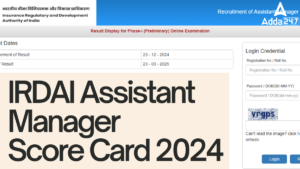Reasoning is a game of wits and presence of mind! Yes, it is true and it might seem as the greatest of the challenge after English Section’s surprises but yet this one can easily be dealt with. You just need correct practice and hardwire your brain to quickly make decisions of what to attempt and what to leave. Practice with these twisted one reasoning question for NICL AO Mains Exam.
Directions (Q. 1 – 5): Study the following information carefully and answer the questions which follow—
A, B, C, D, E and F are six persons who have joined 6 different banks OBC Bank, Punjab National Bank, Bank of Maharashtra, Bank of India, Bank of Baroda, and State Bank of India by scoring different marks in the written exam of a maximum of 200 marks. (marks are an integer value) They all are sitting around a circle facing the centre with equal distance.
C is second to the right of the person who joined Bank of Baroda whose score is 169 marks which were the third lowest marks out of the 6 students. A is immediate to the left of the person who is opposite to the person who joined State Bank of India, who is not near to F. B scored the 2nd highest marks and did not join Bank of India but is 2nd to the left of the person, who scored 174 marks. D is seated opposite to one who joined Bank of India. D is not near to B. E has not scored the lowest marks. C is immediate to the left of the one who joined State Bank of India and C scored 170 marks. The person who joined Punjab National Bank is second to the left of the one who scored 172 marks. The person who joined OBC did not score the highest marks. One of the six students scored which was a prime number. The lowest scored mark is 164.
Q1.Who amongst the following is from OBC?
(a) D
(b) E
(c) C
(d) A
Q2.Four of the following five are alike in a certain way based on the given seating arrangement and thus form a group, who is the one that does not belong to that group?
(a) A
(b) B
(c) C
(d) D
(e) E
Q3.Who is seated between D and the person from Bank of Baroda?
(a) E
(b) A
(c) C
(d) None
(e) The person from Bank of Maharashtra
Q4.Which of the following is true regarding the given information?
(a) F is from Bank of Baroda and seated immediate right of the person who is opposite to the person who joined bank of Maharashtra.
(b) A is from Punjab National Bank and scored 174 marks and is opposite to C
(c) E is from OBC and is to the immediate right of B
(d) C scored 170 marks and is opposite to one who joined Bank of Maharashtra.
(e) The person from Bank of Maharashtra is seated opposite to one who scored 164 marks.
Q5.Which of the following order of marks in descending order is true?
(a) A > B > C > D > E > F
(b) A > B > C > F > E > D
(c) A > B > E > C > F > D
(d) A > B > C > E > F > D
(e) A > B > C > D > F > E
Directions (6-10): Study the following information carefully and answer the given questions.
A word and number arrangement machine when given an input line of words and numbers rearranges them following a particular rule in each step. The following is an illustration of input and rearrangement (All the numbers are two digit numbers)
Input : cp 26 tp ep 38 33 15 mp xp hp 49 72
Step I : cpq 26 tp ep 38 33 16 mp xp hp 49 72
Step II : cpq epo tp 38 33 16 25 mp xp hp 49 72
Step III : cpq epo hpq tp 38 16 25 34 mp xp 49 72
Step IV : cpq epo hpq mpo tp 16 25 34 37 xp 49 72
Step V : cpq epo hpq mpo tpq 16 25 34 37 50 xp 72
Step VI : cpq epo hpq mpo tpq xpo 16 25 34 37 50 71
Step VII : cpq eop hpq mop pqt opx 16 25 34 37 50 71
Step VII is the last step of the above arrangement.
As per the rules followed in the steps given above, find out in each of the following questions the appropriate step for the given input.
Input : as 28 rs gs 48 37 13 ns ys js 57 84
Q6. Which of the following represents the position of ‘38’ in the fifth step?
(a) Eighth from the left end
(b) Sixth from the left end
(c) Fourth from the right end
(d) Sixth from the right end
(e) None of these
Q7. Which of the following would be fourth to the left of second to the right of “nsr” in Step IV ?
(a) jst
(b) 57
(c) gsr
(d) 38
(e) None of these
Q8. In the last step of the rearrangement, ‘rst’ is related to ‘jst’ and ‘27’ is related to ‘rsy’ in a certain way. Which of the following would ‘nrs’ be related to, following the same pattern?
(a) ast
(b) 14
(c) 27
(d) grs
(e) 38
Q9. How many elements (words or numbers) are there between ‘gsr’ and ‘38’ as they appear in the last but one of the outputs?
(a) One
(b) Three
(c) Six
(d) Five
(e) Seven
Q10. Which step number would be the following output?
ast gsr jst nsr rs 14 27 38 47 ys 57 84
(a) Step IV
(b) Step V
(c) Step VI
(d) Step VII
(e) There will be no such step
Q11. Statement: Start to think of travelling by train for a holiday. A train journey can give one a better view of places on the way which an air journey cannot give. You can walk around whenever you want, meet other travelers and locals, relax and watch the landscape go peacefully by. Train travel is both a beautiful and affordable way to see the country, and no trip is more scenic than the trip by trains.
Conclusions:
I. While going for a holiday, people want to enjoy the view of the places on the way.
II. People should not travel by air when they are going for a holiday.
(a) Only I follows
(b)Only II follows
(c) Both I and II follow
(d) None follows
(e) Either I or II follows
Q12. Statement: Ordinarily, Ajit Jogi’s decision to form a new political party in Chhattisgarh would not have caused as much as a mild flutter in the Congress. His reputation has been under a cloud for a long while and his importance in the Congress’s scheme of things has declined. Having become the first Chief Minister of Chhattisgarh upon its formation in 2000, he lost the state to the BJP in 2003, which has held it since then; meanwhile, the Congress has frittered an inordinate amount of political capital in trying to defend him in a string of controversies.
Conclusions:
I. Congress is in a catch-22 situation. It needs to promote competent leaders in the states to revitalize the party.
II. A solid step by the party could take to tackle the existential crisis head-on is to project Rahul Gandhi as CM candidate for the upcoming UP polls and for him to get into the grind.
(a) Only I follows
(b) Only II follows
(c) Both I and II follow
(d) None follows
(e) Either I or II follows
Direction (13-14): Read the following information and answer the given questions:
Statement:- Prime Minister Narendra Modi unveiled the National Disaster Management Plan that seeks to provide a framework and direction to government agencies for prevention, mitigation and management of disasters, medical care, housing and temporary shelters in scarcity-hit areas, relief employment. This is the first national plan since enactment of the Disaster Management Act in 2005.
The national plan, as per the Disaster Management Act, seeks to lay down the guidelines for preparation of state- level disaster management plans as well as plans by each central ministry and department.
(I ) The vision of the plan is to “make India disaster-resilient and significantly decreases the loss of life, livelihoods and assets.
(II) The plan incorporates priorities on strengthening disaster risk governance and lays down certain thematic areas : understanding risk, investing in disaster risk reduction and capacity development.
(III) These activities include early warning, evacuation of people and animals, search and rescue, medical care, housing and temporary shelters in scarcity-hit areas, relief employment and media relations.
(IV) The plan helps in maximizing the ability to cope with disasters at all levels of administration as well as communities.
(V) This is not beneficiary as huge amount of money has been implemented into this plan which may be further utilized in other projects.
Q13. Which of the following options can be inferred from the given statement?
(a) Only I
(b) Only II
(c) Only I, II and III
(d) All except II
(e) None can be inferred.
Q14. Which of the following options can be concluded from the above statement?
(a) All except I
(b) All except II
(c) All except III
(d) All except II and V
(e) None of these.
Q15. Statement: Incessant rain for the past several days has posed the problem of overflowing and flood as the river bed is full of silt and mud.
Which of the following course of action follows from the given statement?
Course of Action:
I. The people residing near the river should be shifted to a safe place
II. The people should be made aware about the imminent danger over radio/television.
III. The silt and mud from the river bed should be cleared immediately after the receding of the water level.
(a) None follows
(b) Only I and ll follow
(c) Only II and III follow
(d) Only I and III follow


.png)

 The Hindu Review October 2022: Download ...
The Hindu Review October 2022: Download ...
 IRDAI Assistant Manager Score Card 2024 ...
IRDAI Assistant Manager Score Card 2024 ...
 IRDAI Assistant Manager Prelims Cut Off ...
IRDAI Assistant Manager Prelims Cut Off ...




